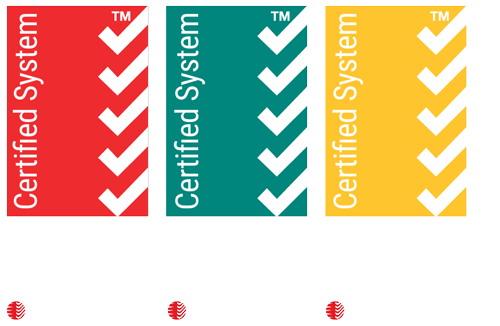Most safety teams were built for yesterday’s risks — not tomorrow’s complexity.
The compliance workloads are rising, expectations from boards are diversifying, and there’s a growing requirement on safety leaders to deliver strategic business value, not simply compliance assurance.
So, what will the future-ready safety team look like?
Drawing on insights from Brian Long (Group Health & Safety Director, Wates Group) and Liam Tiddy (Head of Executive Search, Shirley Parsons) in the Safe365 The Art of Safety Leadership Podcast, this article explores how organisations can build high-performing safety functions ready for the years ahead.
The Changing Definition of Safety Value
For decades, compliance was the finish line. Today, it’s merely the entry ticket.
“Doing compliance well” is now an expectation — the baseline of credibility. The real differentiator lies in how safety contributes to business success.
“The ones that succeed are those who can make safety feel like a value-add for the organisation.” — Brian Long
This redefinition matters because the regulatory environment keeps expanding.
“The profession faces a compliance paradox: while leaders aspire to move beyond compliance, the machinery of regulation keeps adding more. Navigating this paradox requires teams who can operate within compliance requirements while still driving innovation, performance, and resilience.”
Core Capabilities of the Future Safety Team
Tomorrow’s safety teams will need to be deliberately diverse — multidisciplinary, data-driven, commercially fluent, and emotionally intelligent. The skills Brain and Liam believe will need to be represented are:
1. Business & Commercial Acumen
Safety professionals of the future must understand profit and loss as well as hazard and risk.
Brian Long reflected that his most transformative career moment came when he stepped into a P&L role for 15 months. Running part of a business gave him a deep appreciation of operational pressure and empathy for leaders juggling productivity, cost, and safety. That experience, he says, “unquestionably made me a better health and safety leader.”
Pathways to build this capability include rotational assignments into commercial or general management roles and postgraduate business-school programs focused on strategic leadership.
2. Data Insight & Evidence-Based Decision Making
Information is power — and it’s arriving faster than ever.
Safety leaders need people who can interpret data, detect trends, and present insights that drive executive decisions. The “safety analyst” role is emerging as a cornerstone of modern teams: translating analytics into action, connecting safety performance with productivity, and enabling predictive insight rather than reactive reporting.
3. Program & Transformation Management
One of the biggest challenges organisations face is balancing business-as-usual (BAU) with dial-mover programs that elevate maturity.
Transformation requires structure, prioritisation, and disciplined follow-through.
Brian Long often recruits people with consulting or “Big Four” backgrounds — individuals comfortable with ambiguity but grounded in ethics. They bring program-management rigour, help sequence the work, and deliver measurable change without being consumed by day-to-day activity.
4. Diversity of Thought and Background
Liam Tiddy warns against cloning.
Earlier in his career he sought “people like me” — and quickly learned the limits of that model. Future teams must draw from different sectors, disciplines, and life experiences: engineering, risk, analytics, sustainability, HR, even marketing.
“The best health and safety directors would be great leaders in any discipline.” — Liam Tiddy
How to Design the Modern Safety Function
No two organisations share the same risk profile. So before designing a team, leaders must first ask a simple question:
“What does health and safety represent where we operate?” — Brian Long
1. Understand Your Risk Landscape
In Wates Group, Brian’s team faces high-hazard construction risks, task-based injuries, and emerging mental-health challenges. Different risks require different expertise. A copy-paste organisational chart won’t deliver resilience.
2. Build Specialists, Not Just Generalists
High-performing functions combine core generalists with deep specialists in data, wellbeing, and transformation. Each role should have a defined value contribution rather than a vague “advisor” remit.
3. Balance the Engine Room and the Innovators
Compliance keeps the lights on. Innovation moves the dial.
The modern leader must protect both — ensuring the BAU engine stays reliable while empowering “dial-mover” teams to experiment, automate, and modernise systems that lift safety maturity.
4. Overcoming the Brand Problem in Safety
Despite its importance, safety still battles a perception problem. Too often it’s seen as an obstacle rather than a catalyst for performance.
“We have a massive brand issue. People see safety as an impediment to business success — a must-do, not a value creator.” — Brian Long
Reframing the narrative is essential. Safety, resilience, and reliability are business enablers. Language matters — shifting from “health and safety” to “resilience and reliability” better reflects the profession’s strategic contribution.
This isn’t marketing spin; it’s about aligning the profession with enterprise performance, risk mitigation, and brand protection.
Pathways to Develop Tomorrow’s Safety Leaders
1. Step Out to Step Up
Linear career paths won’t produce the next generation of safety leaders. Stepping into commercial, operational, or general-management roles builds credibility and contextual intelligence — skills that can’t be learned from compliance manuals.
2. Continuous Curiosity
“Be curious. Seek to understand what’s going on around you.” — Liam Tiddy
Aspiring leaders should engage with regulators, industry bodies, and peers outside their comfort zone. Curiosity drives relevance; relevance builds influence.
3. Institutional Investment in Talent
Liam Tiddy observes a gap between board expectations and the available talent pipeline. Many companies default to “safe hires” rather than backing emerging leaders. To reverse this, organisations must take calculated risks on new talent and revive academic and graduate pathways that market safety as an exciting career, not a fallback.
From Compliance to Resilience: The Next Frontier
Brian Long argues that the real breakthrough for the profession lies in reframing safety through the lens of resilience.
At Wates Group, this conversation is already happening at board level — connecting operational integrity with business continuity and brand protection.
“What is it about the things we do that we have to ensure are resilient? Because if they’re not, what would that mean for the organisation?” — Brian Long
There are two complementary forms of safety every organisation must manage:
- Human and Behavioural Safety – preventing injuries, engaging people, building culture.
- Operational Resilience and Integrity – ensuring the systems that prevent catastrophic failure remain robust.
Both matter.
Both require different tools and mindsets.
And both demand leaders who are comfortable holding moral conviction and commercial pragmatism simultaneously.
The Future Safety Team Blueprint: Core Capabilities
Business acumen
- Connects safety to performance & ROI
- Cross-functional rotations; business-school study
Data insight
- Enables predictive, evidence-based decisions
- Build analytics capability; visual dashboards
Transformation discipline
- Executes strategic “dial-mover” programs
- Hire program managers; structured governance
Diversity of experience
- Brings fresh perspectives & innovation
- Recruit across industries and functions
Empathy & curiosity
- Strengthens leadership and influence
- Coaching, mentoring, exposure to operations
The safety team of the future will look less like a compliance department and more like a strategic capability unit — blending analysts, human-factors experts, communicators, and transformation specialists.
Conclusion: The Opportunity Ahead
Safety is evolving from compliance guardians to strategic enablers. The opportunity for future safety leaders is to design teams that can both protect and create value — protecting people while enabling performance, resilience, and trust.
The challenge now is for today’s leaders to begin that redesign.






